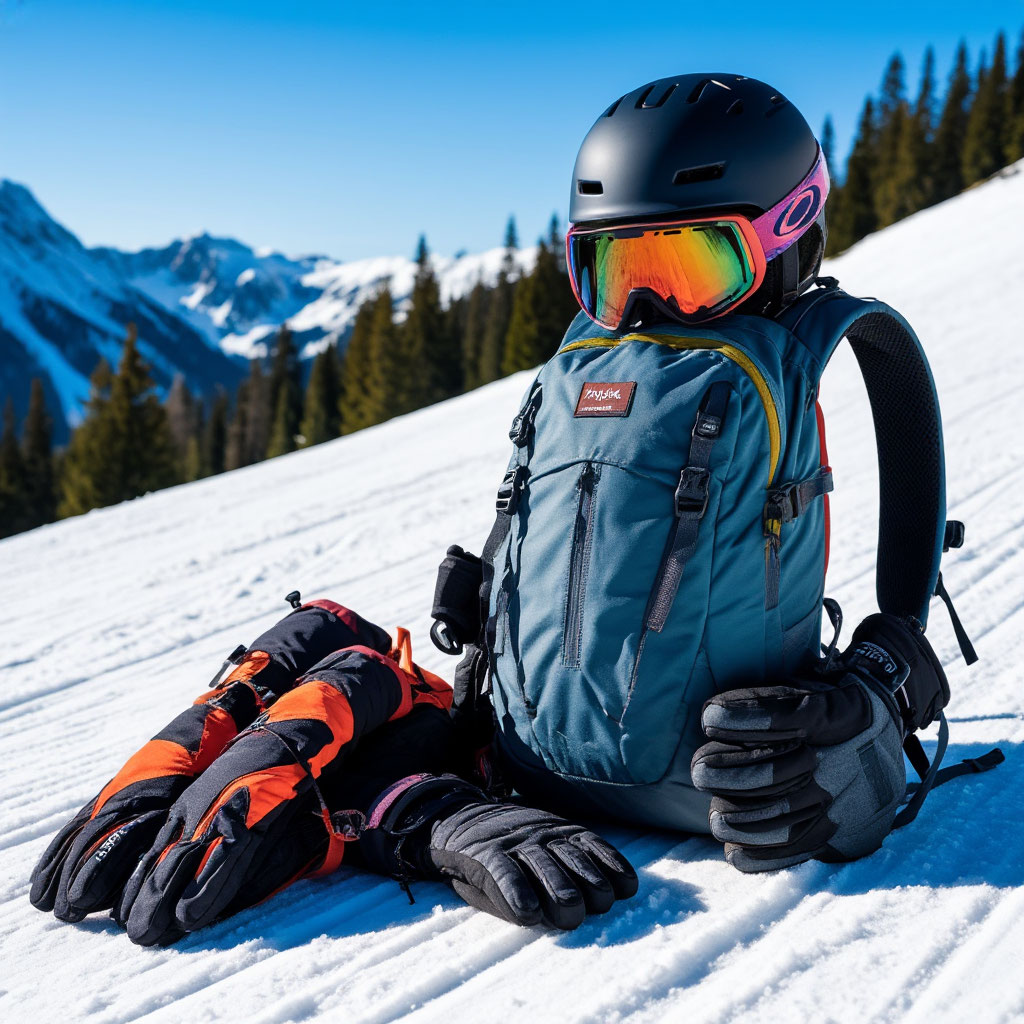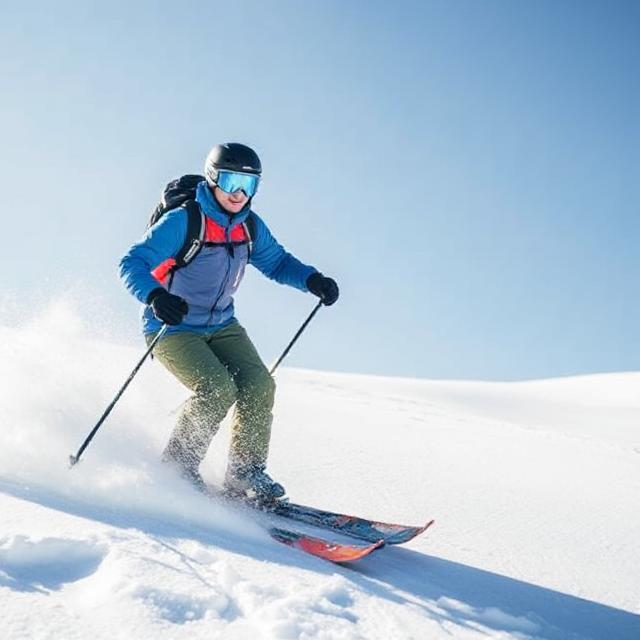Hitting the slopes without the right gear can ruin your quality time or exercise. Whether you’re sliding through fresh snow or gliding down icy slopes, having the right gear is key. From visibility to warmth and safety, every detail counts. Let’s break down the essential ski accessories that really work.

10 Ski & Snowboard Accessories You Can’t Ride Without
A walk in the mountains starts with the right gear. Missing one essential thing will ruin your vacation. Let’s take a closer look at 10 must-have accessories. They will ensure your comfort, safety, and security.
1. High-performance goggles
Your eyes need protection from wind, UV rays, and snow glare. The best anti-fog ski goggles have anti-fog coatings, ventilation systems, and replaceable lenses. The latter help you adapt to changing light. A good seal around your helmet prevents cold air from escaping.
2. Reliable gloves (heated or insulated)
Cold fingers will ruin any run. Heated gloves with rechargeable batteries are ideal for extreme cold. High-quality insulated gloves provide flexibility in most conditions. Make sure they are waterproof and touchscreen compatible. Consider heated gloves versus regular gloves. They allow you to always maintain the right temperature of your hands.
3. The Right Helmet
Wondering if I need a helmet for skiing? Safety on the slopes should be top notch. A helmet with MIPS reduces rotational impact forces, and adjustable vents help regulate temperature. If you like to ride to music, look for built-in headphone pockets.
4. Moisture-wicking base layers
Cotton traps sweat and keeps you cool. Merino wool or synthetic blends keep you dry and warm without adding bulk. You want a snug but breathable fit.
5. Ski-specific socks
Thick socks don’t always mean warmer feet. Thin, compression ski socks improve circulation and help prevent blisters. Look for reinforced padding on pressure points.
6. Gaiters or Balaclavas
Fleece-lined gaiters cover the gaps between your jacket and helmet, while a balaclava provides full face protection on harsh days.
7. Hand and Toe Warmers
Disposable air-activated hand warmers are a lifesaver when it comes to freezing temperatures. Throw them in your ski touring packs for easy access.
8. Ski/Snowboard Backpack (for touring or resort use)
A lightweight, hydration-compatible pack is essential for off-piste travel. Look for avalanche tool compartments, helmet carrying straps, and easy-to-access snack pockets.
9. Ski Straps and Multi-Tool
A broken mount or loose screw shouldn’t be the end of your day. Ski straps keep gear in place temporarily, and a compact multi-tool handles most mountain adjustments.
10. Tune-up Kit (for quick edge adjustments and waxing)
Dull edges make turning difficult. A portable edge sharpener and all-purpose wax keep your gear running smoothly between professional tune-ups.

Goggles 101: How to Choose (and Prevent Fogging)
Not all goggles are created equal. Lens tint affects visibility. On low-light days, look for yellow or pink. In bright conditions, look for dark mirror coatings. Look for anti-fog coatings and double-layered lenses to prevent condensation.
How to Keep Them Clear
Fogging occurs when warm air hits cold lenses. Vents help, but fit is key. Goggles should fit snugly against your helmet, not press against your face. Don’t tuck your gaiters into your frames. They’ll hold your breath. The best anti-fog ski goggles will help you take your mind off the small stuff on the slope. If necessary, you can use a proper method to defog your lenses. The essential ski accessories will help. Here are three options:
- Use a microfiber cloth to wipe off fog, not a glove.
- Store your goggles in a breathable bag, not in your pocket.
- Choose models with magnetic lenses for quick replacement.

Heated vs. Traditional Gear: Are They Worth It?
Heated jackets and gloves may seem like a luxury, but they are a must-have in sub-zero temperatures. Battery-powered options last 4-8 hours, though bulkier designs may restrict movement. Traditional insulated gear uses down or synthetic fillers. They are lighter but less adjustable. Consider heated gloves vs. traditional gloves to keep your hands warm
| Feature | Heated Gear | Traditional Gear |
| Warmth | Adjustable, intense | Consistent, moderate |
| Weight | Heavier (battery pack) | Lightweight |
| Cost | $$$ | $$ |
| Best For | Extreme cold, long days | Casual riders |
If you run cold or tour in deep backcountry, heated liners are worth the investment. For resort laps, high-quality insulation usually does the trick.

Helmets and Protective Gear: What Actually Works?
Do I Need a Helmet for Skiing? Some riders still avoid them, but the statistics don’t lie. Helmets reduce the risk of head injuries by 60%. Modern models are lightweight, with vents, earphone pockets, and adjustable fit. Look for MIPS (Multi-Directional Impact Protection) technology for added safety.
Outside the Helmet:
- Wrist guards save snowboarders from broken bones.
- Knee pads cushion falls from ice.
- Impact shorts protect your tailbone on the rails.
- Reflective stripes increase visibility in storms.
Essential ski gear and protective gear can prevent most injuries.
Don’t hit the slopes unprepared. These essential ski accessories make every run safer and more enjoyable. From fog-proof goggles to reliable helmets, the right gear matters. Invest wisely, ride confidently.
Tags: Gear, Recovery, Skis